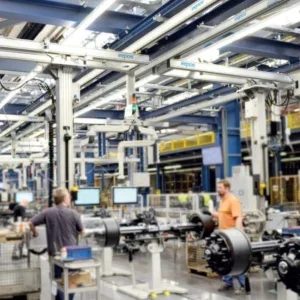As the quality of products from the developing world improves, the origin of manufacture is becoming less of a selling point. It means that, for many, innovation has become a lifeline, and the pressure is on engineering and research and development departments heading into 2008.
China, for example, is home to one of the most comprehensive markets in the world, not only in its sheer scale, but also in the diversity among the companies that coexist in the same marketplace.
Only a fool would suggest that the quality of products from this part of the world isn’t improving. But take quality aside from the moment, the main impact to the west has been, and will continue to be, the influx of low cost products.
As LEEA chief executive Derrick Bailes says, some, although by no means all, are of doubtful quality. “The quality issues have been made worse by opportunist importers with little product knowledge seeking to make an easy profit,” he notes. “However when such products are routed through the established industry, their shortcomings come to light and they are rejected. On the positive side, input from the more responsible importers coupled with a willingness to learn has resulted in a considerable improvement in quality from many sources,” Bailes adds.
Liqun Xiao, the secretary general of the Material Handling Council of China (MHCC), agrees, saying the quality of lifting equipment has improved for a number of reasons:
– Related ISO standards have been adopted as the National Standard.
– Some of the main international players in this market have entered China, such as Demag, Konecranes and Abus.
– Crane companies have more choice and different quality components for their products, depending on the needs and price range of the customer. A lot of international brands have contributed to the quality improvement of lifting equipment. For example, electrical control devices and systems from Siemens and ABB, gearboxes from SEW, Siemens and Flender, brakes from Bubenzer Bremsen, Sibre and Sime-Stromag, conduct bars from Vahle and Wampfler, remote control devices from HBC and Cattron-theimeg and grabs from Peiner. The list is endless.
– It is now possible to buy most crane components and/or attachment of international brands through their representative branches in China.
– Local manufacturers have upgraded their design means, and manufacturing facilities.
– The rigorous quality control required by important domestic users, such as the military, and international cooperation has enhanced the quality control systems of local crane manufacturers.
In response to all this, there’s a whole raft of all singing all dancing cranes, hoist and components coming out of the west, including the increasing presence of RFID in, say, shackles and hooks. More on that soon.
Check out the link to the Crosby Group, which has many such examples on its site. I’ve also attached a link to an interesting article from the Beijing Review. Have a read.
In the meantime, keep me updated with all your news, views and opinions.
Hoist remains the only international factory crane magazine, bringing you the latest news, product finder, reference info and more covering bridge cranes, jib cranes, chain hoists, wire rope hoists, blocks, end-of-line attachments, components and the installation, maintenance, training, consultancy and trade associations surrounding this equipment.
Happy New Year!
Richard Howes, Editor






